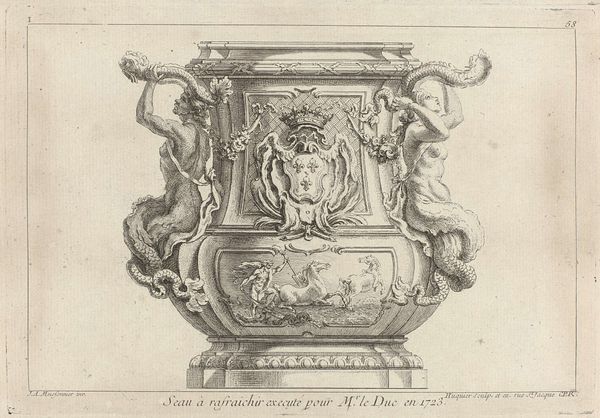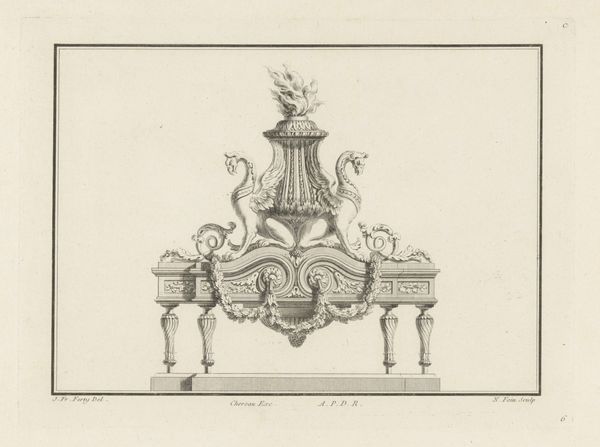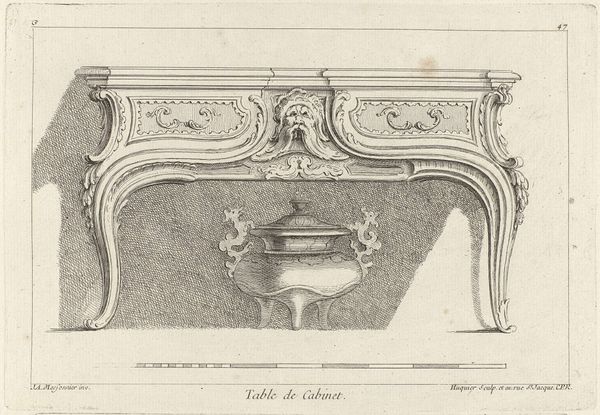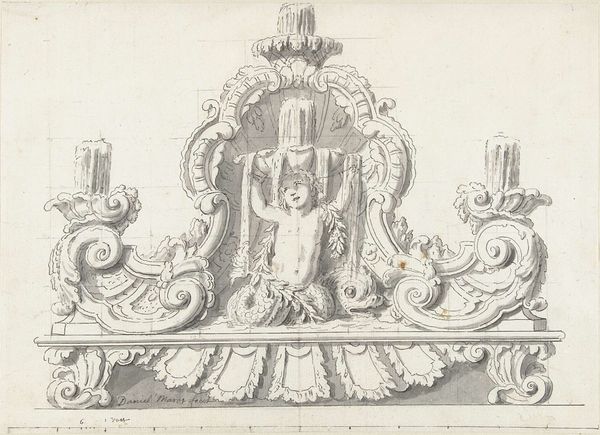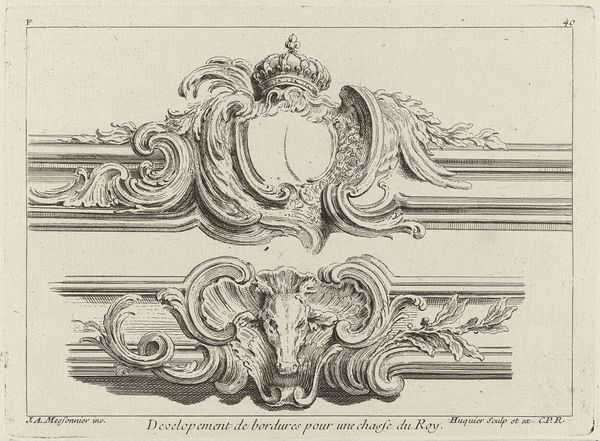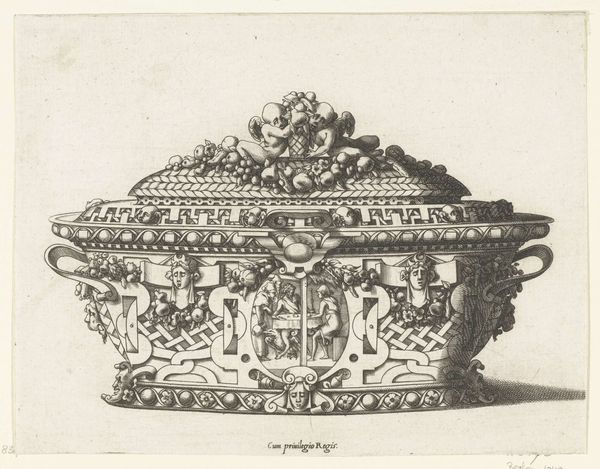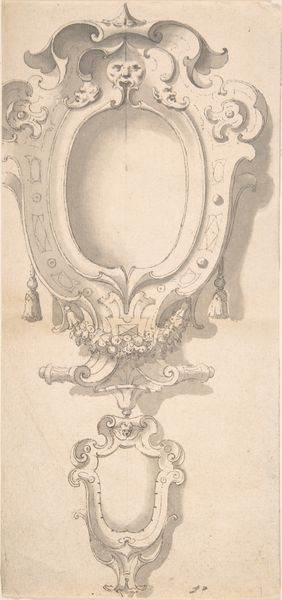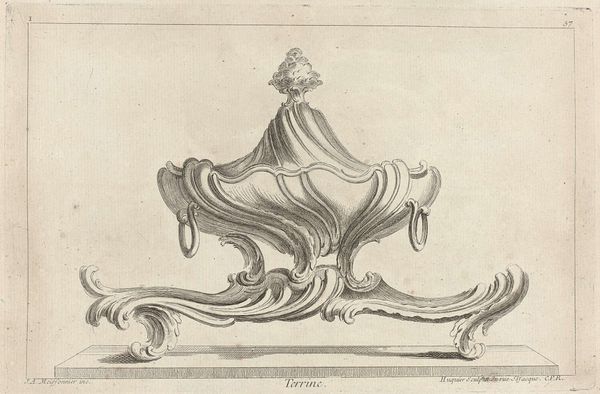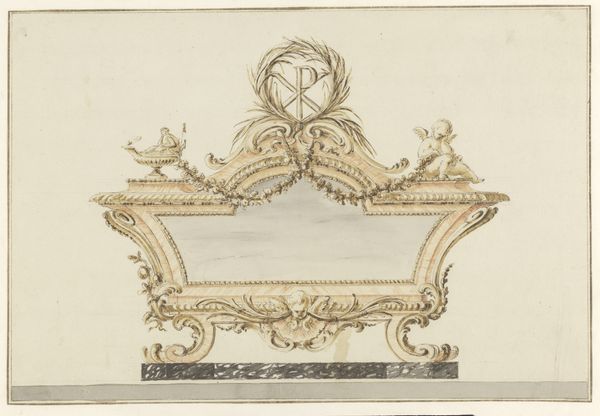
Ontwerp voor een waskom met het wapen van de Franse koning 1738 - 1749
0:00
0:00
drawing, engraving
#
drawing
#
baroque
#
history-painting
#
decorative-art
#
engraving
Dimensions: height 179 mm, width 274 mm
Copyright: Rijks Museum: Open Domain
Curator: This engraving from the Rijksmuseum, titled "Ontwerp voor een waskom met het wapen van de Franse koning," which translates to "Design for a washbasin with the coat of arms of the French king," was created between 1738 and 1749 by Gabriel Huquier. Editor: It certainly speaks of royal privilege! My first impression is one of intense visual excess—it’s Baroque ornamentation at its most flamboyant. What stands out most is the level of detail achieved solely through line work; it's almost dizzying. Curator: The line is definitely put to work here. Given that Huquier was an engraver and printmaker, he was likely circulating these designs to workshops. We can consider the labor involved in translating this design into a physical object and the economic function this drawing served. Editor: Absolutely. I’m drawn to the symbolism embedded within it. The cherubic figures flanking the central shield feel celebratory. What about the heraldic lilies--fleurs-de-lis-- clustered beneath the royal crown? Are they a nod to the purification rites associated with French monarchs, mirroring the act of washing? Curator: That's a fascinating angle. But I wonder, to what extent was this design realized into a functioning washbasin? This seems like a design intended to project French absolutism through craft. Who would have commissioned it and from what material was it ultimately fashioned, if at all? Editor: Agreed, the connection with purity is persuasive. The fleur-de-lis certainly suggests a continuity of power, and even legitimacy, passed through generations. I do love how these emblems get disseminated through luxury goods into the broader culture, even today. Curator: Exactly. This piece illuminates the intricate network of designers, artisans, and patrons involved in creating material expressions of power in 18th-century France, beyond mere aesthetic choices, this represents how deeply ingrained status could be into the materials of everyday existence. Editor: Ultimately, this work brings us into a world where even washing becomes a spectacle, charged with meaning and symbolic weight. I see those ripples continuing through history, perhaps even finding echoes in contemporary obsessions with status symbols and luxury brands.
Comments
No comments
Be the first to comment and join the conversation on the ultimate creative platform.
